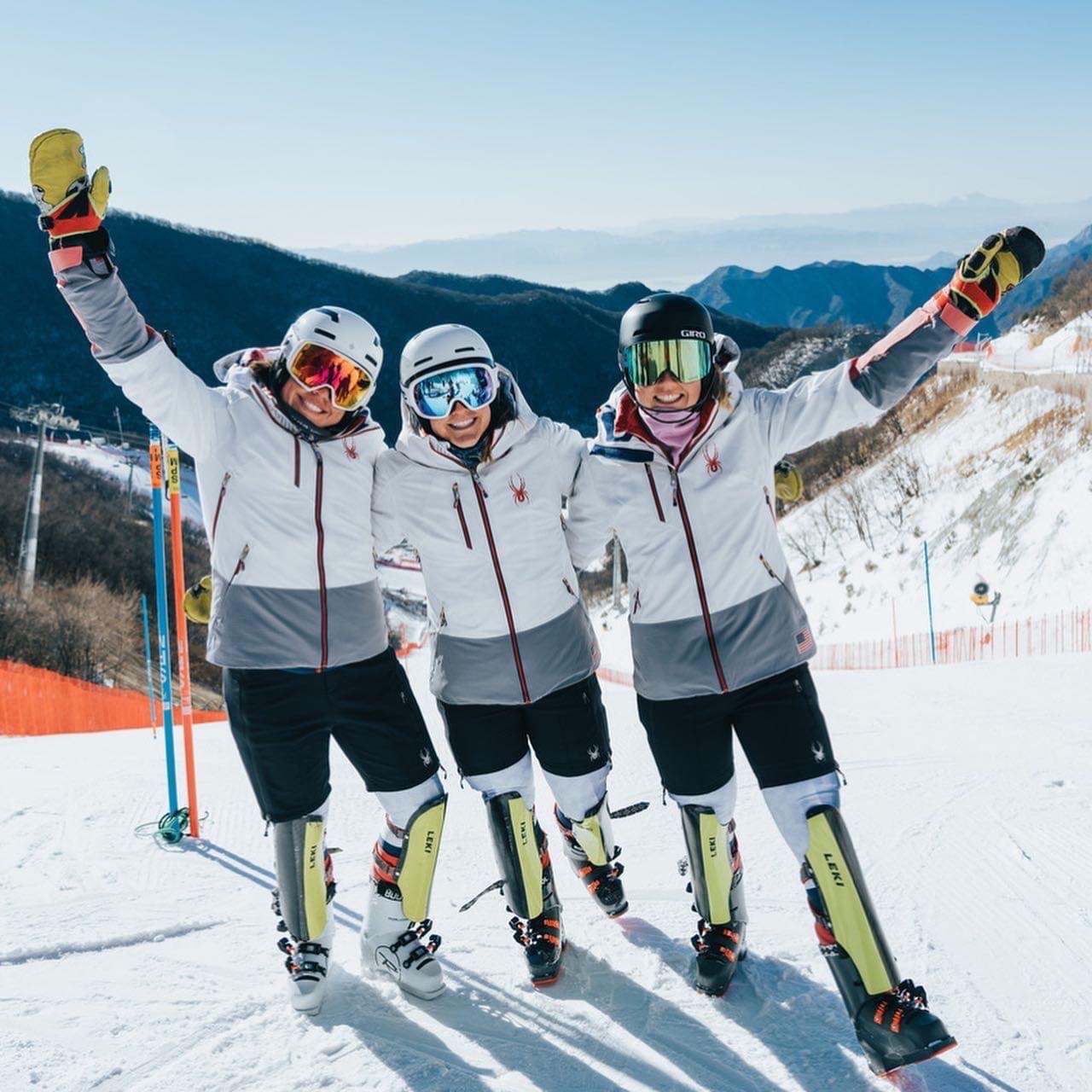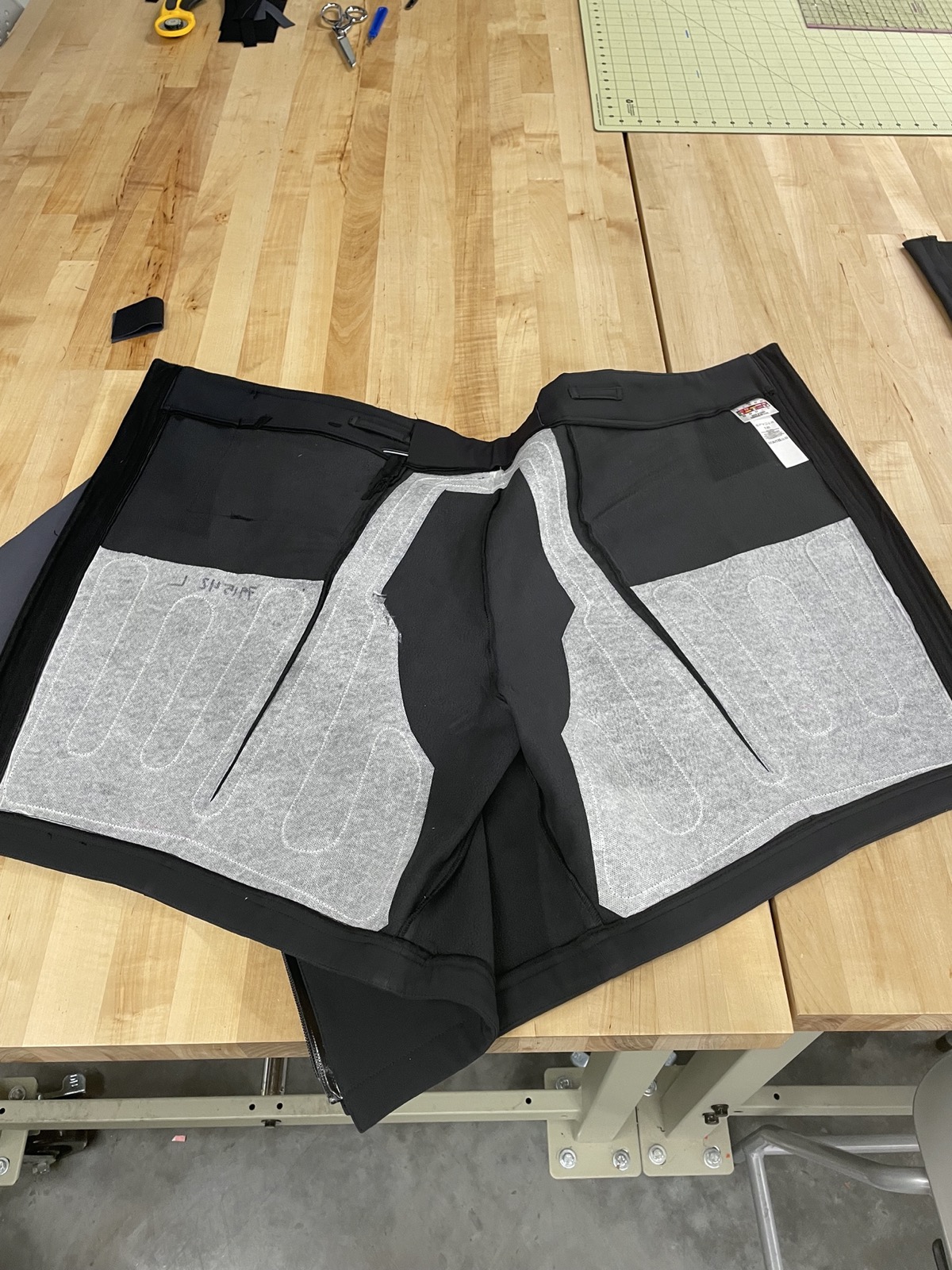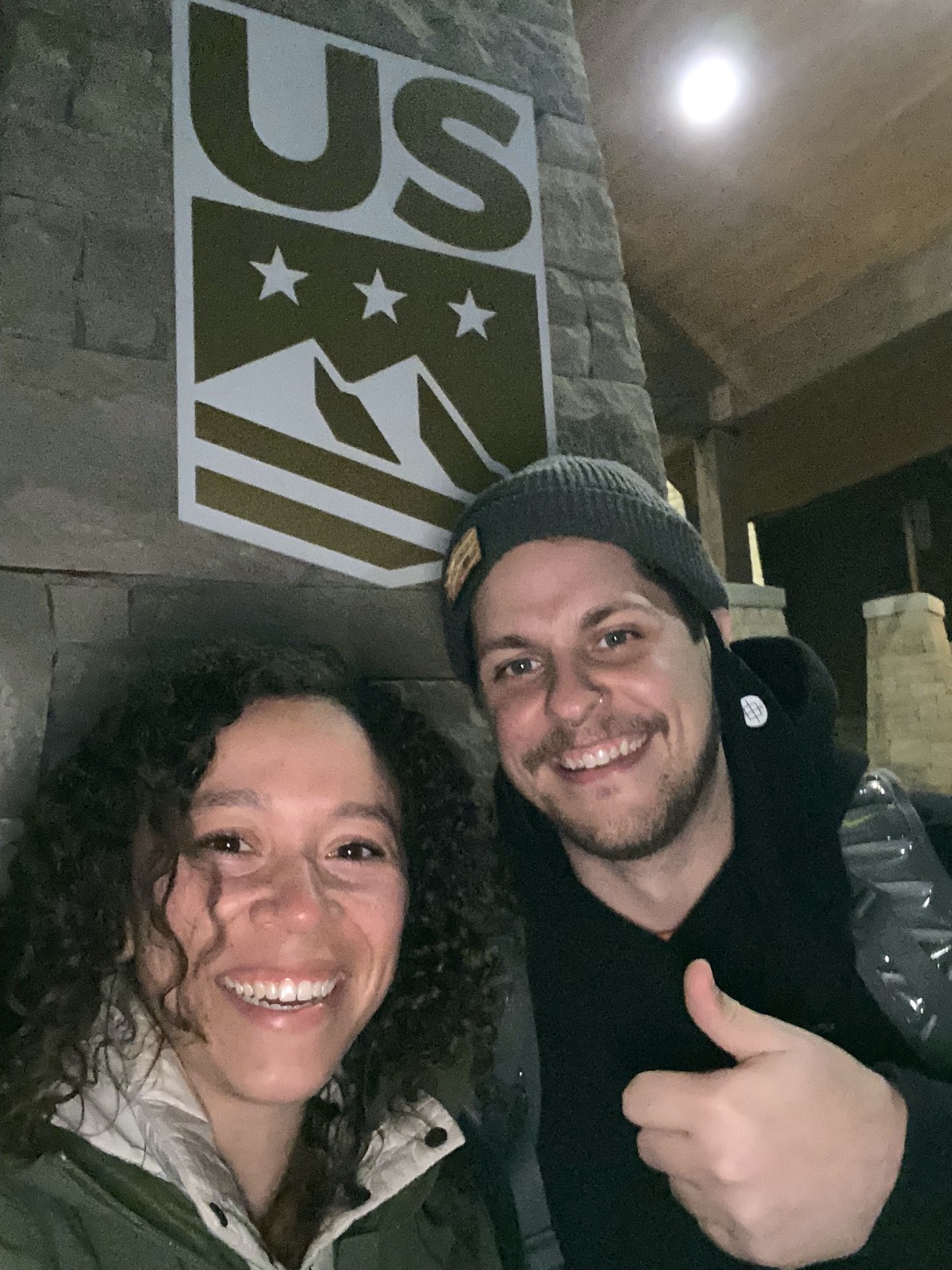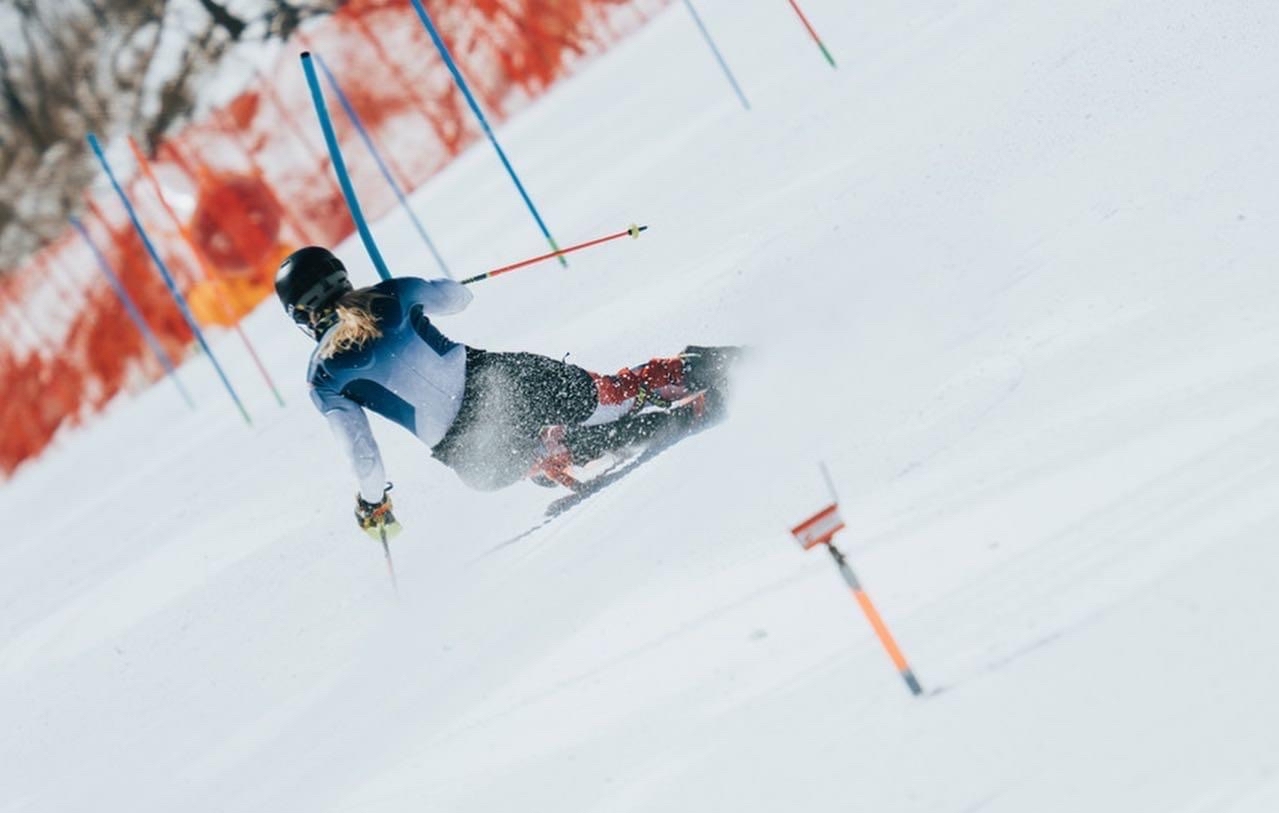Team USA’s Skiers Are Using Battery-Heated Shorts At The Olympics
7:41 minutes

Team USA’s Alpine Ski Team is wearing custom-designed heated shorts to stay warm on the freezing slopes at the Beijing Olympics. But these aren’t your average shorts. They use a lithium-ion battery, and the thread they’re sewn with serves as the heat conductor.
Ira talks with Josh Daniel and Lauren Samuels, graduate students at the University of Oregon’s sports product management program, who came up with the cutting-edge design.



Invest in quality science journalism by making a donation to Science Friday.
Josh Daniel is a graduate student in the University of Oregon’s Sports Product Management Program based in Portland, Oregon.
Lauren Samuels is a graduate student in the University of Oregon’s Sports Product Management Program based in Portland, Oregon.
IRA FLATOW: To fight the extreme cold that the Olympics, Team USA’S alpine ski team is wearing custom-designed heated shorts to stay warm as they warm up in Beijing. But these aren’t your average shorts. They use a lithium-ion battery. And the thread they’re sewn with– it’s the heating element.
And if that’s not wow enough, it’s a group of graduate students who came up with the cutting-edge design. Joining me now to talk more about this new high-tech garment are Josh Daniel and Lauren Samuels, graduate students at the University of Oregon’s sports product management program, based in Portland. Welcome to Science Friday.
LAUREN SAMUELS: Thank you.
JOSH DANIEL: Glad to be here.
IRA FLATOW: Nice to have you. Josh, give me an idea of how this technology works. Is it merely the thread that acts as a heating element as it’s sewn through the garment?
JOSH DANIEL: As far as the technology goes, it’s just going to be a wire that is going to be embroidered down to a fabric. And then we incorporate that into the actual production of the shorts. That’s going to hook up to a battery, and actually has a little remote that the skiers can use to adjust the temperature on it.
IRA FLATOW: And is this used anywhere else in sports, this kind of concept?
JOSH DANIEL: Yeah. We actually got in contact with our buddy Colby Taylor down at Innovative Sports Technology in Eugene. And he’s been working with some MLB teams as far as, like, pitching sleeves to heat up.
IRA FLATOW: I know that amateur skiers out there might be familiar with heated pants that you can buy in the store to keep your legs snuggly warm. How is this technology different than those ski pants?
JOSH DANIEL: Yeah, it’s just a little bit more fine tuned. In general, when you just go to the store to buy, like, a heated jacket or heated pants that are already out there, it’s not going to be a single heating unit. It’s actually going to be a bunch of smaller units that are then bound together with traditional wiring. It’s going to be a little bit harder to control, a little bit less consistent, and just overall doesn’t heat up as well or as efficient as the technology we’re using.
IRA FLATOW: I understand that one of your instructors was approached by the US alpine ski team to help come up with a new product to help keep the athletes warm. And you were on the US ski team a few years ago. You have some firsthand knowledge there. Tell me how you landed on making shorts, Lauren.
LAUREN SAMUELS: Yeah, so the US ski team came to us with an idea for a vest or a jacket for the upper body. And with my ski racing experience, I thought about it for a little bit and wondered what the current athletes were thinking, because from my experience, the legs are what’s most important to our performance, and it’s the hardest to get warm once they get cold. So we interviewed an athlete, current athlete, on the US ski team and talked with him through his daily routines for races and training and when it’s really cold. And he told us that the most important part of his body was his legs, and he needed to keep those warm in order to stay focused and perform at his best. So we pivoted and went towards shorts.
IRA FLATOW: This is Science Friday from WNYC Studios. Tell me how these shorts then solve a common issue that happens when you’re warming up ahead of an event.
LAUREN SAMUELS: So these shorts you can wear– you could wear them until 30 seconds before you race if you wanted to. You can warm up and stay warm, versus before, you may have warmed up too soon and then you cool down, and now your body was sweaty, and now that sweat’s cold. So this kind of makes it more consistent.
IRA FLATOW: Why not just keep them on going down the hill? Is there something– any reason why you can’t do that?
LAUREN SAMUELS: Well, in our sport, hundies matter. We like to use that term. But hundredths of a second really can make or break your day. So every little bit counts. And having an additional layer, even if it’s only a couple of millimeters thick, on your body is not worth it for these athletes.
IRA FLATOW: And Josh, you designed these so that they can be quickly taken off right before you go down the hill.
JOSH DANIEL: Yeah, the plan was to just make sure that they were going to be easy to take off right before. Most of the design work that I did on it was going to be based on the heating element itself and how to navigate that wire through the butt and the leg to make sure that it isn’t going to be unruly for the skiers to actually wear.
IRA FLATOW: So you can actually take these off without taking off your skis?
JOSH DANIEL: Yeah. Yeah, that’s kind of the goal. Leading up to the race, it was kind of a key time where skiers were losing a lot of heat. And rather than having them continuously doing jumping jacks or trying to run in place or do other exercises to stay warm, We. Knew that if we could create this product that would step in and regulate that body temperature leading up to that final second, we feel like there could be performance benefit.
IRA FLATOW: Now, I know this whole project came together pretty quickly. The two of you came up with the concept, and you manufactured the shorts in just four months. Josh, how do you do that? Tell me.
JOSH DANIEL: It was definitely a fun project. I think the fact that I had such a great team and we worked really hard to try to get all the idea together. Originally, we were going to just, from scratch, fully manufacture all of these garments ourselves. And it ended up being kind of a time crunch, so we were able to incorporate some of the gear that was already being used by the ski team and custom fit the elements into what they’re already wearing. And I think that benefited the product as a whole, because it kept us from having to introduce the athletes to an entirely new product. The technology is wildly different, but they were already wearing these shorts, so they were a little bit more prone to accept this new technology that normally they’ve had trouble getting adoption from.
IRA FLATOW: In fact, you were on such a time crunch that you ended up hand delivering them, right?
JOSH DANIEL: Oh, yeah, yeah, yeah. I spent a couple hours in the lab just getting all the manufacturing done and realized that I had kind of passed the time limit for the overnight delivery that we needed to do. Hit up the team and was just like, all right, well, how are we going to do this? Kind of thought about it, and it’s like, well, it’s actually a little bit cheaper to just pack it up and hop on a plane and go down there.
So it ended up being great. It worked out. Lauren actually just moved down to Salt Lake City, so she grabbed me from the airport. Went up to the training facility and got to look around and see what’s going on there. So it was a good experience.
IRA FLATOW: That’s pretty cool. Now, Lauren, I know you talked to the ski team in Beijing. How are they liking the shorts so far?
LAUREN SAMUELS: Yeah, I talked to one athlete, and she said they’re great. They were using it in the training days in the week leading up to the races. And Paula’s from Minnesota. And she was like, you have no idea how cold it is here. It’s colder than Minnesota. And these shorts are incredible. It’s game-changing for us to be able to train and stay warm.
IRA FLATOW: Saying it’s colder than Minnesota is saying a mouthful, isn’t it?
LAUREN SAMUELS: Yeah.
IRA FLATOW: Well, I want to thank you both for taking time to be with us today. And good luck to you. I’m sure we’re going to be seeing these in the sports shop someday, right?
LAUREN SAMUELS: We’ll see.
IRA FLATOW: Josh Daniel and Lauren Samuels, graduate students at the University of Oregon’s sports product management program.
Copyright © 2022 Science Friday Initiative. All rights reserved. Science Friday transcripts are produced on a tight deadline by 3Play Media. Fidelity to the original aired/published audio or video file might vary, and text might be updated or amended in the future. For the authoritative record of Science Friday’s programming, please visit the original aired/published recording. For terms of use and more information, visit our policies pages at http://www.sciencefriday.com/about/policies/
Shoshannah Buxbaum is a producer for Science Friday. She’s particularly drawn to stories about health, psychology, and the environment. She’s a proud New Jersey native and will happily share her opinions on why the state is deserving of a little more love.
Ira Flatow is the founder and host of Science Friday. His green thumb has revived many an office plant at death’s door.